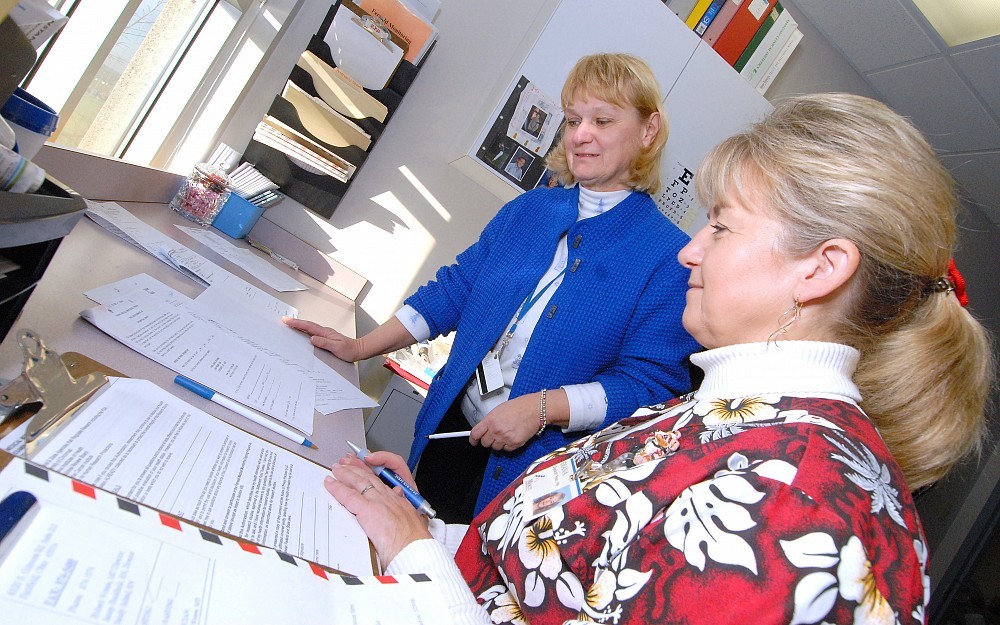
Uranium Exposure Linked to Increased Lupus Rate
CINCINNATIPeople living near a former uranium ore processing facility in Ohio are experiencing a higher than average rate of lupus, according a new study conducted by scientists at the University of Cincinnati and Cincinnati Childrens Hospital Medical Center.
Lupus is a chronic inflammatory disease that can affect the skin, joints, kidneys, lungs, nervous system and other organs of the body. The underlying causes of lupus are unknown, but it is usually more common in women of child-bearing age.
For this new study, a collaborative team of UC and Cincinnati Childrens researchers wanted to compare lupus rates between people who were exposed to uranium and those who were not in an effort to explain the high number of lupus cases reported in a Cincinnati community.
Extensive review of medical records and serum antibody analysis to verify the cases, concluded that people who were exposed to higher levels of uranium, based on their living proximity to a former uranium ore processing plant, had lupus rates four times higher than the average population.
"Former studies have suggested that people with lupus may be more sensitive to radiation and that both genetics and environmental exposures play a role in disease development. Our study shows a strong correlation between uranium exposure, a radioactive substance, and an increased lupus rate that merits further investigation, says Pai-Yue Lu, MD, a pediatric rheumatology fellow at Cincinnati Childrens and lead researcher for the study.
"With more research in this area, we may gain additional insight on the types of environmental factors that contribute to lupus development and the mechanisms by which they work, Lu adds. "There could be other effects of uranium and related exposures that could contribute to or help explain our findings.
Lu is presenting this finding and its potential implication at the American College of Rheumatology Annual Scientific Meeting Monday, Nov. 12, in Washington, D.C. She completed the project as part of her masters degree in clinical and translational science training at UC.
The Cincinnati-based teams research is based on nearly two decades of data collected through the Fernald Medical Monitoring Program, the United States first and largest legally mandated comprehensive medical monitoring program. The program was established in 1990 after a federal investigation revealed that National Lead of Ohios Feed Materials Production Center in the Hamilton County, Ohio, community of Fernald, was emitting dangerous levels of uranium dust and gases into the surrounding communities.
"The availability of this cohort and carefully collected data and biospecimens provides a great setting to ask research questions, says Susan Pinney, PhD, UC professor of environmental health and principal investigator of the Fernald study.
Almost 10,000 community residents enrolled in the Fernald Medical Monitoring Program. Community residents were classified into several exposure groups: high exposure, moderate exposure, low exposure and no exposure. (Uranium plant workers were not part of this study.)
"Typical U.S. incidence rates for lupus are 1.8 to 7.6 cases per 100,000. Among the 25 confirmed lupus cases we identified through the Fernald community cohort, 12 were in the high exposure group, eight with moderate exposure and five in the low exposure group, says Lu.
Research was supported by a pilot grant from a Center for Environmental Genetics, a National Institute of Environmental Health Sciences-funded program to support core facilities and technologies needed to conduct innovative research that focuses on how environmental agents interact with genetic and epigenetic factors to influence disease risk and outcome. Shuk-mei Ho, PhD, Jacob A. Schmidlapp Chair and Professor of Environmental Health, serves as principal investigator of the CEG grant.

Pai-Yue Lu, MD, is a pediatric rheumatology fellow at Cincinnati Children s pursing her master's in clinical and translational science at UC through environmental health.

Susan Pinney, PhD, is a professor at UC.
Tags
Related Stories
Study: Platform-predicted treatments improve outcomes for...
April 4, 2025
Results from a new Phase 3 trial published in the journal npj Precision Oncology found that an assay that includes an assessment of cancer stem cell sensitivity to chemotherapy can accurately decide more effective treatments and lead to increased outcomes for patients with platinum-resistant ovarian cancer.
Pediatrician celebrates 30th UC College of Medicine reunion with...
April 3, 2025
There’s a vital thread woven into the fabric of Chris Peltier’s life. It’s black and red, and it knits all things Bearcat together into a life that was transformed by the University of Cincinnati and the UC College of Medicine.
Hands-on experiences, real-world impact
April 3, 2025
Second-year medical sciences student Jay Patel is pursuing his passions at UC — conducting cancer research, exploring public policy as a Portman Fellow, and leading an international nonprofit foundation.
